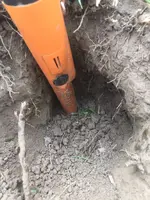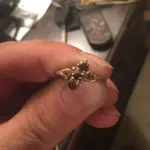True - "No Free Lunch" applies. Iron Bias, like discrimination, is a filter, and like all detector filters has its drawbacks. In this case, in thick iron, iron bias may filter out high conductors in close proximity to the iron. On the 800 I like to run without iron bias, but I sometimes put the same program with some iron bias in the User Profile slot (or vice versa) that way if I happen upon a possible iron false, I can instantly switch in some iron bias by just switching between the "main" program and it's iron bias modified "twin" in the user profile slot. If the false "softens" or mutes, likely iron and I can make the decision to move on or dig. For potentially falsing big or round iron which is more resistant to iron bias filtering, I use the pinpointer to get a bead on just how big the target is.
As far as depth is concerned, I don't worry about it much or obsess over it. Most of the time I have no real idea how deep the target is when it comes out of a farm field plug because I am just trying to get it out of the hole with my shovel for quicker recovery. In parks and athletic fields, I am more careful about the plug, but still rarely take note of depth. Have faith in your machine that it will go deep enough. There is plenty of evidence the Equinox can deliver the goods at depth. I really don't think about it down to the inch. Besides, depth is only part of the equation, ability separate in trash and hit targets with a wide range of conductivities, which is what the equinox specializes at, is also key. Don't matter if the target is 10" or 3". If you can't see it at 3" because its next to a nail or because its a mid-conductor vice a high conductor, it might as well be 2 feet down.





